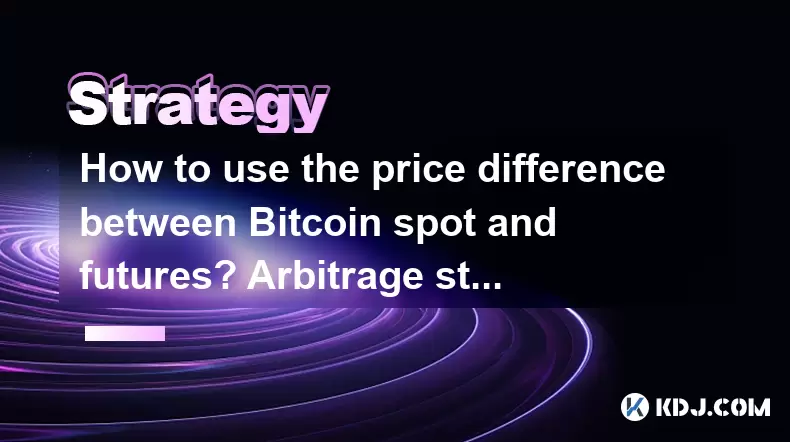-
 Bitcoin
Bitcoin $107,247.2038
-0.18% -
 Ethereum
Ethereum $2,424.7947
0.34% -
 Tether USDt
Tether USDt $1.0003
-0.02% -
 XRP
XRP $2.1171
-3.33% -
 BNB
BNB $645.6618
0.06% -
 Solana
Solana $141.5898
-1.32% -
 USDC
USDC $0.9998
0.00% -
 TRON
TRON $0.2710
-0.41% -
 Dogecoin
Dogecoin $0.1602
-2.99% -
 Cardano
Cardano $0.5553
-2.28% -
 Hyperliquid
Hyperliquid $36.3019
-2.42% -
 Bitcoin Cash
Bitcoin Cash $491.7212
2.04% -
 Chainlink
Chainlink $13.0810
-0.23% -
 Sui
Sui $2.6080
-5.06% -
 UNUS SED LEO
UNUS SED LEO $9.0040
-0.05% -
 Stellar
Stellar $0.2350
-3.06% -
 Avalanche
Avalanche $17.2294
-2.31% -
 Toncoin
Toncoin $2.8075
-1.05% -
 Shiba Inu
Shiba Inu $0.0...01121
-3.43% -
 Litecoin
Litecoin $84.2215
-0.32% -
 Hedera
Hedera $0.1429
-4.88% -
 Monero
Monero $312.2199
-0.90% -
 Dai
Dai $0.9997
-0.01% -
 Ethena USDe
Ethena USDe $0.9999
-0.02% -
 Polkadot
Polkadot $3.2973
-2.60% -
 Bitget Token
Bitget Token $4.4742
3.12% -
 Pi
Pi $0.5631
-10.10% -
 Uniswap
Uniswap $6.7817
-2.06% -
 Pepe
Pepe $0.0...09252
-3.74% -
 Aave
Aave $251.3830
-2.24%
How much is the initial investment in Bitcoin?
When initially investing in Bitcoin, it's crucial to assess your risk tolerance and investment goals, and to select a reputable platform and investment strategy that aligns with those factors.
Jan 11, 2025 at 07:12 am

Key Points:
- Factors Influencing Initial Investment: Risk tolerance, investment goals, available capital
- Pros and Cons of Different Investment Strategies: Dollar-cost averaging, lump-sum investment, value investing
- Recommended Initial Investment Amounts: Beginner, intermediate, and advanced investors
- Investment Platforms and Fees: Crypto exchanges, brokerages, custody services
- Tax Implications: Capital gains tax, FIFO method
- FAQs on Initial Bitcoin Investment: Common questions regarding investment size, timing, and strategies
How to Determine the Appropriate Initial Investment in Bitcoin
1. Assess Your Risk Tolerance
Your risk tolerance determines the maximum amount you can comfortably lose. If you are averse to risk, consider starting with a smaller investment. Conversely, if you have a higher tolerance for risk, you may be comfortable investing a larger sum.
2. Establish Investment Goals
Define your goals for investing in Bitcoin. Are you holding for long-term appreciation, trading for short-term profits, or diversifying your portfolio? Your goals will influence the amount and strategy of your investment.
3. Evaluate Your Financial Situation
Consider your available capital and current financial obligations. Your initial investment should not compromise your financial stability or essential expenses. Begin with an amount that aligns with your budget.
4. Research and Choose an Investment Platform
Select a reputable crypto exchange or brokerage that aligns with your investment needs and risk tolerance. Consider factors such as fees, security, customer support, and liquidity.
5. Choose an Investment Strategy
Decide on an investment strategy based on your goals and risk tolerance. Options include dollar-cost averaging, lump-sum investment, or value investing.
6. Calculate Your Initial Investment
Use a combination of your risk tolerance, goals, and financial situation to determine the appropriate initial investment amount. Start with a small sum if you are a beginner or have a low risk tolerance. Advanced investors may consider a larger allocation.
7. Monitor and Adjust Your Investment
Once you have made your initial investment, monitor its performance regularly and adjust your strategy as needed. Reassess your risk tolerance, goals, and financial situation to ensure your investment aligns with your objectives.
FAQs on Initial Bitcoin Investment
How much is a good starting amount to invest in Bitcoin?
- For beginners with a low risk tolerance, start with $500-$1,000. Intermediate investors with a higher tolerance for risk may invest up to $5,000-$10,000.
What is the best time to invest in Bitcoin?
- There is no definitive best time to invest. Consider your investment goals and risk tolerance to align your entry point with market conditions.
Is it safe to invest in Bitcoin?
- Bitcoin is a volatile asset, but it has demonstrated long-term growth potential. Invest only what you can afford to lose and be prepared for significant price fluctuations.
How do I pay taxes on my Bitcoin investments?
- Bitcoin is treated as property for tax purposes. Capital gains tax is incurred upon selling Bitcoin and is calculated based on the FIFO (first-in, first-out) method.
Disclaimer:info@kdj.com
The information provided is not trading advice. kdj.com does not assume any responsibility for any investments made based on the information provided in this article. Cryptocurrencies are highly volatile and it is highly recommended that you invest with caution after thorough research!
If you believe that the content used on this website infringes your copyright, please contact us immediately (info@kdj.com) and we will delete it promptly.
- Crypto Presales in 2025: MAGACOIN FINANCE and the Hunt for New Coins
- 2025-06-27 04:50:12
- Bitcoin's Next Leap: Will It Hit a New All-Time High with Michaël van de Poppe's Prediction?
- 2025-06-27 05:50:12
- Litecoin Mining in 2025: Rigs, Returns, and the Rise of Cloud Mining
- 2025-06-27 05:10:12
- LINK's Holder Count Soars as ATH Predictions Heat Up: What's Next?
- 2025-06-27 05:30:12
- Dogecoin, Meme Coins, and Price Predictions: What's the Hype?
- 2025-06-27 05:50:12
- Senate, Bitcoin, and the Reserve: What's the Deal?
- 2025-06-27 04:30:12
Related knowledge

What are the skills of Bitcoin option hedging? Practical case sharing
Jun 24,2025 at 04:01pm
Understanding Bitcoin Option HedgingBitcoin option hedging is a risk management strategy used by traders and investors to protect their positions in the volatile cryptocurrency market. By using options, individuals can limit potential losses while retaining the opportunity for profit. In essence, it allows one to insulate against adverse price movements...

How to use the price difference between Bitcoin spot and futures? Arbitrage strategy
Jun 20,2025 at 02:56pm
Understanding Bitcoin Spot and Futures MarketsTo effectively leverage arbitrage opportunities between Bitcoin spot and futures markets, it's essential to understand the fundamental differences between these two types of markets. The spot market refers to the direct buying and selling of Bitcoin for immediate delivery at the current market price. In cont...

How to increase DeFi lending income? Strategy and risk analysis
Jun 24,2025 at 02:08pm
Understanding DeFi Lending and Its Income PotentialDeFi (Decentralized Finance) lending has emerged as a popular way to earn passive income in the cryptocurrency space. Unlike traditional banking systems, DeFi lending platforms allow users to lend their crypto assets directly to borrowers without intermediaries. The lenders earn interest based on the su...

How to operate cryptocurrency cross-market arbitrage? Practical analysis
Jun 23,2025 at 04:01am
Understanding Cryptocurrency Cross-Market ArbitrageCryptocurrency cross-market arbitrage involves taking advantage of price differences for the same digital asset across different exchanges. The core idea is to buy low on one exchange and sell high on another, capturing the profit from the discrepancy. This strategy relies heavily on real-time market da...

How to make profits from high-frequency cryptocurrency trading? Sharing core skills
Jun 19,2025 at 05:07pm
Understanding High-Frequency Cryptocurrency TradingHigh-frequency trading (HFT) in the cryptocurrency market involves executing a large number of trades at extremely fast speeds, often within milliseconds. This method relies on small price discrepancies across exchanges or within a single exchange’s order book. Traders use complex algorithms and ultra-l...

What are the methods of cryptocurrency quantitative trading? Detailed analysis
Jun 22,2025 at 11:07pm
Understanding the Core of Cryptocurrency Quantitative TradingCryptocurrency quantitative trading refers to the use of mathematical models and algorithms to execute trades in the digital asset market. Unlike traditional discretionary trading, which relies heavily on human judgment, quantitative trading leverages data-driven strategies to identify profita...

What are the skills of Bitcoin option hedging? Practical case sharing
Jun 24,2025 at 04:01pm
Understanding Bitcoin Option HedgingBitcoin option hedging is a risk management strategy used by traders and investors to protect their positions in the volatile cryptocurrency market. By using options, individuals can limit potential losses while retaining the opportunity for profit. In essence, it allows one to insulate against adverse price movements...

How to use the price difference between Bitcoin spot and futures? Arbitrage strategy
Jun 20,2025 at 02:56pm
Understanding Bitcoin Spot and Futures MarketsTo effectively leverage arbitrage opportunities between Bitcoin spot and futures markets, it's essential to understand the fundamental differences between these two types of markets. The spot market refers to the direct buying and selling of Bitcoin for immediate delivery at the current market price. In cont...

How to increase DeFi lending income? Strategy and risk analysis
Jun 24,2025 at 02:08pm
Understanding DeFi Lending and Its Income PotentialDeFi (Decentralized Finance) lending has emerged as a popular way to earn passive income in the cryptocurrency space. Unlike traditional banking systems, DeFi lending platforms allow users to lend their crypto assets directly to borrowers without intermediaries. The lenders earn interest based on the su...

How to operate cryptocurrency cross-market arbitrage? Practical analysis
Jun 23,2025 at 04:01am
Understanding Cryptocurrency Cross-Market ArbitrageCryptocurrency cross-market arbitrage involves taking advantage of price differences for the same digital asset across different exchanges. The core idea is to buy low on one exchange and sell high on another, capturing the profit from the discrepancy. This strategy relies heavily on real-time market da...

How to make profits from high-frequency cryptocurrency trading? Sharing core skills
Jun 19,2025 at 05:07pm
Understanding High-Frequency Cryptocurrency TradingHigh-frequency trading (HFT) in the cryptocurrency market involves executing a large number of trades at extremely fast speeds, often within milliseconds. This method relies on small price discrepancies across exchanges or within a single exchange’s order book. Traders use complex algorithms and ultra-l...

What are the methods of cryptocurrency quantitative trading? Detailed analysis
Jun 22,2025 at 11:07pm
Understanding the Core of Cryptocurrency Quantitative TradingCryptocurrency quantitative trading refers to the use of mathematical models and algorithms to execute trades in the digital asset market. Unlike traditional discretionary trading, which relies heavily on human judgment, quantitative trading leverages data-driven strategies to identify profita...
See all articles
























































































